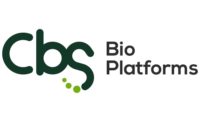CBS Bio Platforms highlights three key insights to reduce feed costs at World Pork Expo
CBS Bio Platforms gives advice on how to unlock feed value, protect against TI exposure and boost natural immunity.

As pig farmers and feed producers look at options to minimize costs and reduce risks in a tough economic environment, new insights and tools from feed science have emerged to help them get the best results.
Three top examples to reduce feed costs are highlighted by CBS Bio Platforms at the 2023 World Pork Expo.
“Challenging times on the farm are a reality but these insights and tools can help you weather the storm toward recovery of the profit cycle,” said JD Baltzell, sales manager, U.S.A., with CBS.
1. Unlocking feed value
The first example for pig farmers and feed producers is new knowledge to tackle high feed costs. Research shows advances in Bio-Catalyst technology can allow pig farmers to get upward of 5–10% more energy and nutrient value from a particular feed formulation by breaking down otherwise hard- or impossible-to-digest ingredient components.
For pig operations, new options such as the latest generation of ProSparity are state-of-the art, containing comprehensive Bio-Catalyst components to achieve total breakdown of both traditional or alternative pig diet ingredients.
“Bottom line, it’s a cost reducer no matter what diet you’re feeding,” said Baltzell. “It gives you more flexibility in ingredients and extends your feed dollar that much further.”
2. Utilizing feed science insights — Protect against TI exposure
The second example is new knowledge to minimize risk when reducing reliance on soybean meal usage — specifically by protecting against trypsin inhibitor (TI) exposure.
“With high soybean meal prices the past two years we’ve seen more interest in less expensive dietary proteins, including whole or full fat soybeans that have been cooked, pressed or extruded in one way or another,” said Rob Patterson, VP of innovation and commercialization with CBS.
“However, insights from our feed science network have shown more awareness is needed on the risk of exposure to trypsin inhibitors that can be an overlooked consequence of using these alternative ingredients, leading to reduced performance and profitability[,]” Patterson said.
It's critical that feed producers and farmers become more aware of this issue, the testing options and how to mitigate risk, he said. One testing option from CBS is FeedCheck Soy — an innovative tool that allows for rapid on-site analysis of soybean meal quality, including for residual urease, which is a marker for TI levels. A feed additive option from CBS to help mitigate TI levels is ProSparity. More information on the TI issue is available in Rob Patterson's article on the CBS website.
3. Boosting natural immunity
The third example is new feed technology infused with Yeast Bioactives to maximize health and performance. The new generation of this unique technology features improved consistency, reliability and value as a feed ingredient, with improved results activating beneficial bioactive components.
For pig feed, a top option is newly available Acidiferm, which contains a comprehensive blend of activated organic acids fortified with CBS Yeast Bioactives technology. This option helps promote the growth of beneficial bacteria within the GIT for improved performance and health while mitigating pathogenic bacteria.
“This technology helps pig farms avoid costly problems and get the most out of resources invested,” said Baltzell. “Like all the top feed science options, when applied correctly it’s like having a ‘cheat code’ for getting better results. The advantages you get can make a big difference to helping your operation stay viable toward more positive economic times.”
Learn more about CBS Bio Platforms at www.cbsbioplatforms.com.
Source: CBS Bio Platforms
Looking for a reprint of this article?
From high-res PDFs to custom plaques, order your copy today!





